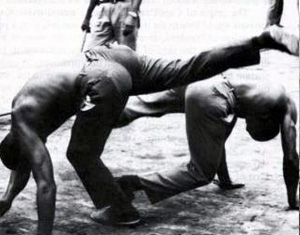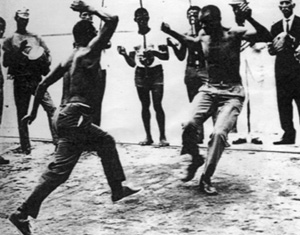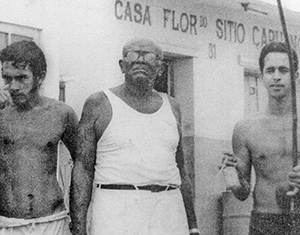What is Capoeira?

Created by Slaves
Capoeira was brought to Brazil from Africa, during the colonial period, a martial art that grew from survival. People were brought from Angola, Congo and Mozambique, and with them, they brought their cultural traditions. They hid their martial art and traditions into a form of dance. The African people developed capoeira not only to resist oppression, but also for the survival of their culture and the lifting of their spirits. After slavery, they continued to play capoeira.
 |
Created by SlavesCapoeira was brought to Brazil from Africa, during the colonial period, a martial art that grew from survival. People were brought from Angola, Congo and Mozambique, and with them, they brought their cultural traditions. They hid their martial art and traditions into a form of dance. The African people developed capoeira not only to resist oppression, but also for the survival of their culture and the lifting of their spirits. After slavery, they continued to play capoeira. |
 |
Hidden FormWith no employment, many of them turned to gangs. Quickly capoeira was associated with crime and in 1892 became outlawed in Brazil. If a person was caught for practicing the art, they were punished by cutting the tendons of the back of their feet. A rhythm, called cavalaria, was created as an alarm that warned them of police. People that played capoeira had nicknames to hide their identity from the police. Often they had more than one. Getting a nickname has become a tradition and people gain a nickname usually at a batizado. |
 |
The Illegal ArtCapoeira was against the law for 20 years until 1918. The first capoeira school ever to exist was that of Mestre Bimba. He was given permission to do so in 1937, after he demonstrated the art in front of president Getúlio Varga. Capoeira was finally recognized as a national sport. There are two main styles of capoeira. Mestre Bimba is recognized as the father of Capoeira Regional. The second main style is capoeira Angola, a slower and lower to the ground game retaining the rituals and traditions of capoeira. |